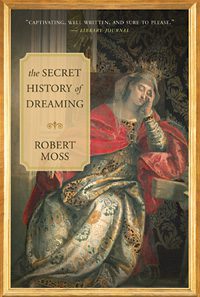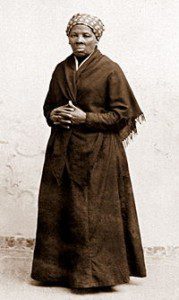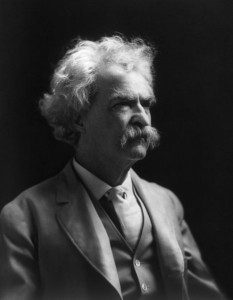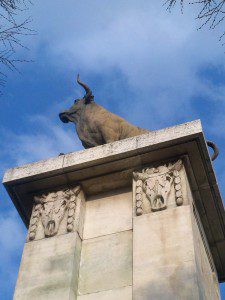 What is one thing people should know about the role dreams have played in history?
What is one thing people should know about the role dreams have played in history?
Dreams are part of our human survival kit, part of what has kept us going, and evolving on this planet. Across history most people have valued dreaming for two reasons beyond all others: because dreams enable us to see into the possible future, and because they put us in touch with sources of knowledge and wisdom beyond the ordinary mind. If you look at the state of our world and how we are being constantly blind-sided by unexpected and unwanted mass events, you’ll see that our ability to navigate the history of the future may depend on reviving the arts of dreaming.
You are a former history professor and you say that to research and write this book you had to become a “dream archaeologist”. What is “dream archaeology” and what skills and resources are required to practice it?
While “archaeology” is often understood to be the science of unearthing and studying antiquities, the root meaning is more profound: it is the study of the arche, the first and essential things. The practice of “dream archaeology” requires mastery of a panoply of sources, and the ability to read between the lines and make connections that have gone unnoticed by specialists who were looking for something else. It requires the ability to locate dreaming in its context – physical, social and cultural. And it demands the ability to enter a different time or culture, through the exercise of active imagination, and experience it from the inside as it may have been. These are the skills we need to excavate the inner dimension of the human adventure.
What is the most important thing you can tell us about your book, The Secret History of Dreaming?
The Secret History of Dreaming restores a missing dimension to our understanding of what drives the human adventure: the vital role of dreams and imagination in science and literature, war and religion, medicine and the survival of our kind. History without the inner side is as shallow as history without economics, and as boring as history without sex.
This is not another book about dreams. It is a history of dreaming, a term I use in an expansive sense to encompass not only night dreams but also waking visions, the interplay of mind and matter that is sometimes called synchronicity, and experiences in a creative “solution state”.
Explain your statement that a dream led directly to one of the biggest oil discoveries in world history.
In 1937, Colonel Harold Dickson, the former British Political Agent in Kuwait, dreamed that a sandstorm opened a crater under a strange tree in the desert, and revealed a mummy that came to life as a beautiful woman who gave him an ancient coin. His wife recorded the dream for him in the middle of the night, and then he consulted a Bedouin woman dream interpreter who gave him the location of the tree in his dream – in the Burqan hills – and told him he would find great treasure there. He was able to persuade the Kuwait Oil Company (which had been drilling dry holes up to this point) and they struck it rich at the exact place he had dreamed. This was the origin of Kuwait’s oil wealth and a major source for the Allies in World War II.
Tell us about the dreams of the Founding Fathers
John Adams and Dr Benjamin Rush – who made a close study of precognitive dreams – were in the habit of exchanging dreams in their extensive correspondence. In 1809, Rush wrote to Adams about a dream in which the doctor’s son read him a page from the future history of the United States. The dream letter described “the renewal of friendship” between Adams and Thomas Jefferson, who had been estranged for many years because of their political disagreements. It stated that the later correspondence of the two former presidents would inspire many. And it recorded that Adams and Jefferson “sunk into the grave nearly at the same time.” Nearly seventeen years later, long after their reconciliation, the two former presidents died on the same day – July 4, 1826. The predictions on the page of Dr Rush’s dream history were exactly fulfilled.
Explain how Harriet Tubman’s dreams and visions helped her to guide escaping slaves to freedom on the Underground Railroad.
 Harriet Tubman is an iconic figure in American history – the runaway slave from Maryland’s Eastern Shore who went back to the South, braving great dangers, to free her fellow-slaves and became the most successful “conductor” of the Underground Railroad. Yet the secret of Harriet Tubman’s achievement has rarely been told. She was a dreamer and a seer. In her dreams and visions, she could fly like a bird. Her gift may have been associated with a near-death experience in her childhood, when an angry overseer threw a two-pound lead weight that laid open her skull. We learn from her how great gifts can spring from our wounds. Harriet herself said she inherited special gifts – including the ability to travel outside the body and to visit the future – from her father, who “could always predict the future” In The Secret History of Dreaming, I examine the evidence that her ancestors were Ashanti, and that she may have inherited something of the Ashanti experience of dream tracking. I also look at the influence of the first, fiercely brave and inspiring, itinerant black women preachers, whose example may have helped Harriet develop the power to transfer her vision. She could sing courage into people’s hearts.
Harriet Tubman is an iconic figure in American history – the runaway slave from Maryland’s Eastern Shore who went back to the South, braving great dangers, to free her fellow-slaves and became the most successful “conductor” of the Underground Railroad. Yet the secret of Harriet Tubman’s achievement has rarely been told. She was a dreamer and a seer. In her dreams and visions, she could fly like a bird. Her gift may have been associated with a near-death experience in her childhood, when an angry overseer threw a two-pound lead weight that laid open her skull. We learn from her how great gifts can spring from our wounds. Harriet herself said she inherited special gifts – including the ability to travel outside the body and to visit the future – from her father, who “could always predict the future” In The Secret History of Dreaming, I examine the evidence that her ancestors were Ashanti, and that she may have inherited something of the Ashanti experience of dream tracking. I also look at the influence of the first, fiercely brave and inspiring, itinerant black women preachers, whose example may have helped Harriet develop the power to transfer her vision. She could sing courage into people’s hearts.
Tell us how Freud, tragically, may have missed an early dream diagnosis of the mouth cancer that killed him many years later.
The most famous of all the dreams Freud analyzed was one of his own, the Irma Dream. In The Interpretation of Dreams he gives a lengthy account of this 1895 dream and his work with it. In the dream, he inspects the mouth of a patient called Irma and discusses her condition with several doctors. The tragic irony is that in all his work on this dream, Freud may have missed a health warning that could have saved his life. I report on the exhaustive work of a cancer surgeon who compared Freud’s medical records with his dream report and concluded that the contained an amazingly exact preview of precise symptoms of the oral cancer that killed Freud 28 years later.
You write: “Because young Sam Clemens could not find Brazil, he failed to become the first cocaine dealer in North America and instead became Mark Twain.” Tell us that story!
 While he was working as a printer in Keokuk, Iowa, young Sam Clemens read a book that described “a vegetable product with miraculous powers” that was growing in Brazil. Sam was “fired with a longing” to go up the Amazon, secure a supply of this miracle plant – and make a fortune. He sailed to New Orleans on a riverboat whose pilot was the celebrated Horace Bixby.
While he was working as a printer in Keokuk, Iowa, young Sam Clemens read a book that described “a vegetable product with miraculous powers” that was growing in Brazil. Sam was “fired with a longing” to go up the Amazon, secure a supply of this miracle plant – and make a fortune. He sailed to New Orleans on a riverboat whose pilot was the celebrated Horace Bixby.
When he got to New Orleans, Sam found that no ship in port was sailing for Brazil and no one could tell him how to get there. So he changed his plans, sought out Bixby, and persuaded him to take him on as an apprentice pilot. Working on the Mississippi river, he got many of the ideas for the books that made him famous under a pen-name borrowed from the boatmen’s cry “Mark Twain”, meaning two fathoms, safe water.
The miracle plant Sam had set out to find was coca. Had he succeeded in his original plan, Keokuk, Iowa would have become the cocaine capital of America. Because Sam Clemens couldn’t find Brazil, he failed to become the first cocaine dealer in North American history and instead became Mark Twain.
Tell us about the woman you call “the beautiful dream spy of Madrid”.
Ah, the lovely Lucrecia de León! When she was a guest of the Spanish Inquisition, one of the investigators told her, “You are so beautiful a dead man would rise up and make you pregnant.” Since women are absent from so much of the history written by men, it is remarkable that – thanks in part to the Spanish Inquisition – the record of no fewer than 415 dreams of a young woman of Madrid have survived from the time of the Spanish Armada. They were transcribed between 1587 and 1590, by clerics who listened to her accounts of her night adventures while an armed courier waited in the street ready to gallop to the holy city of Toledo to carry the latest dream installment to the head of the powerful Mendoza clan, second only to the Habsburgs in Spain. The reason Lucrecia’s dreams were so prized was that she had a gift for seeing the future and discovering what was going on behind closed doors, in the royal palace or the house of Sir Francis Drake in England. Her dreams were exploited as sources of military intelligence and as political propaganda, in a time when dream visions were still greatly respected. Some of them were painted; others were performed as theatre for high society in the town house of a dowager duchess who may also have been an English agent. Lucrecia’s story is a fascinating chapter in the history of women as well as the history of dreaming.
– from an interview with Robert Moss on his book The Secret History of Dreaming published by New World Library.

